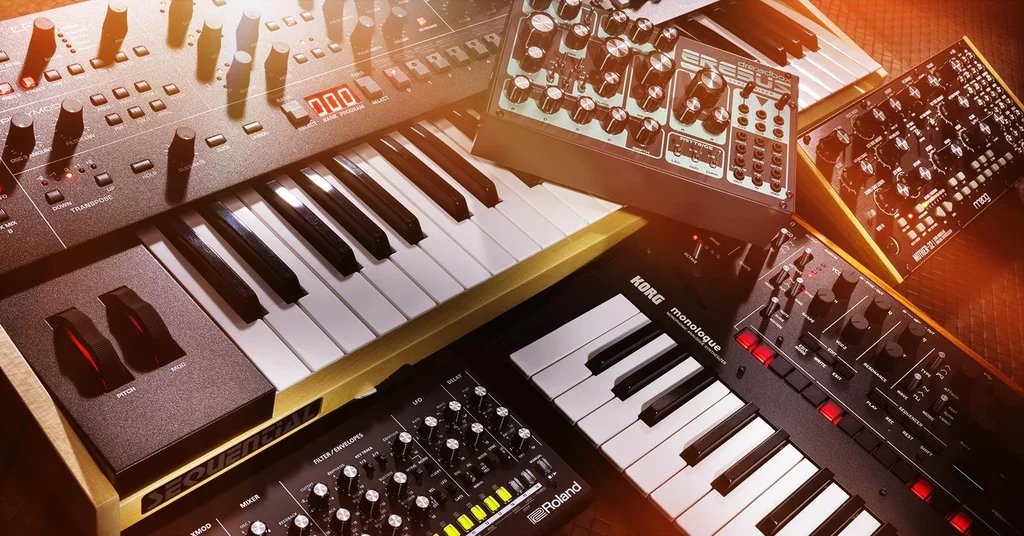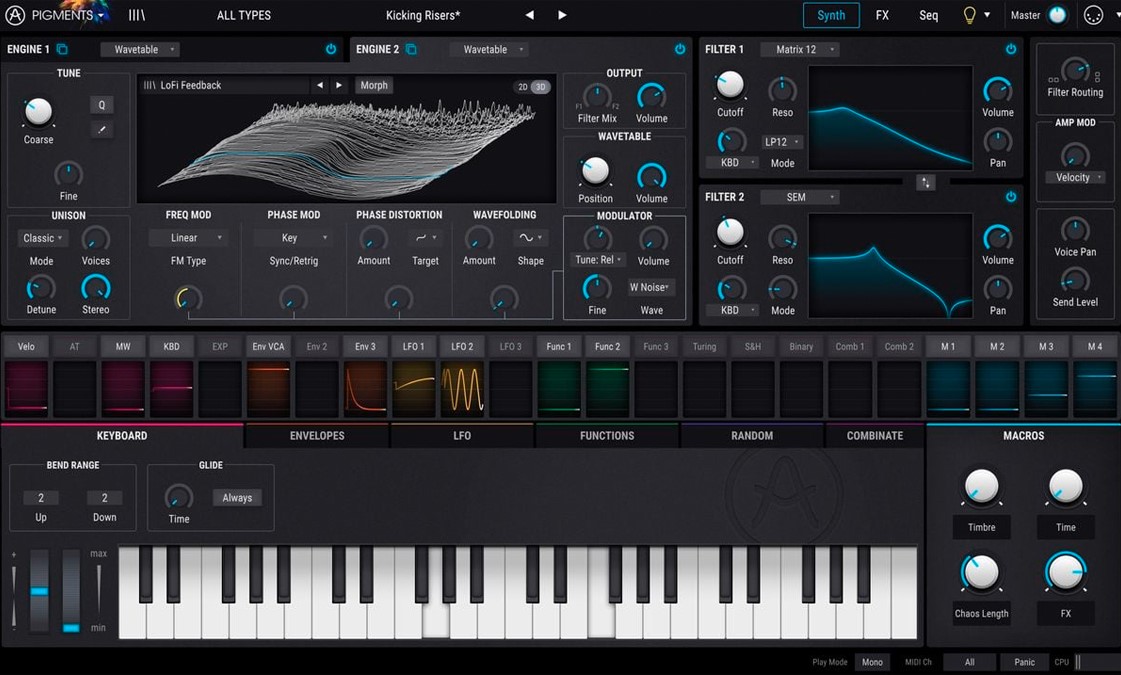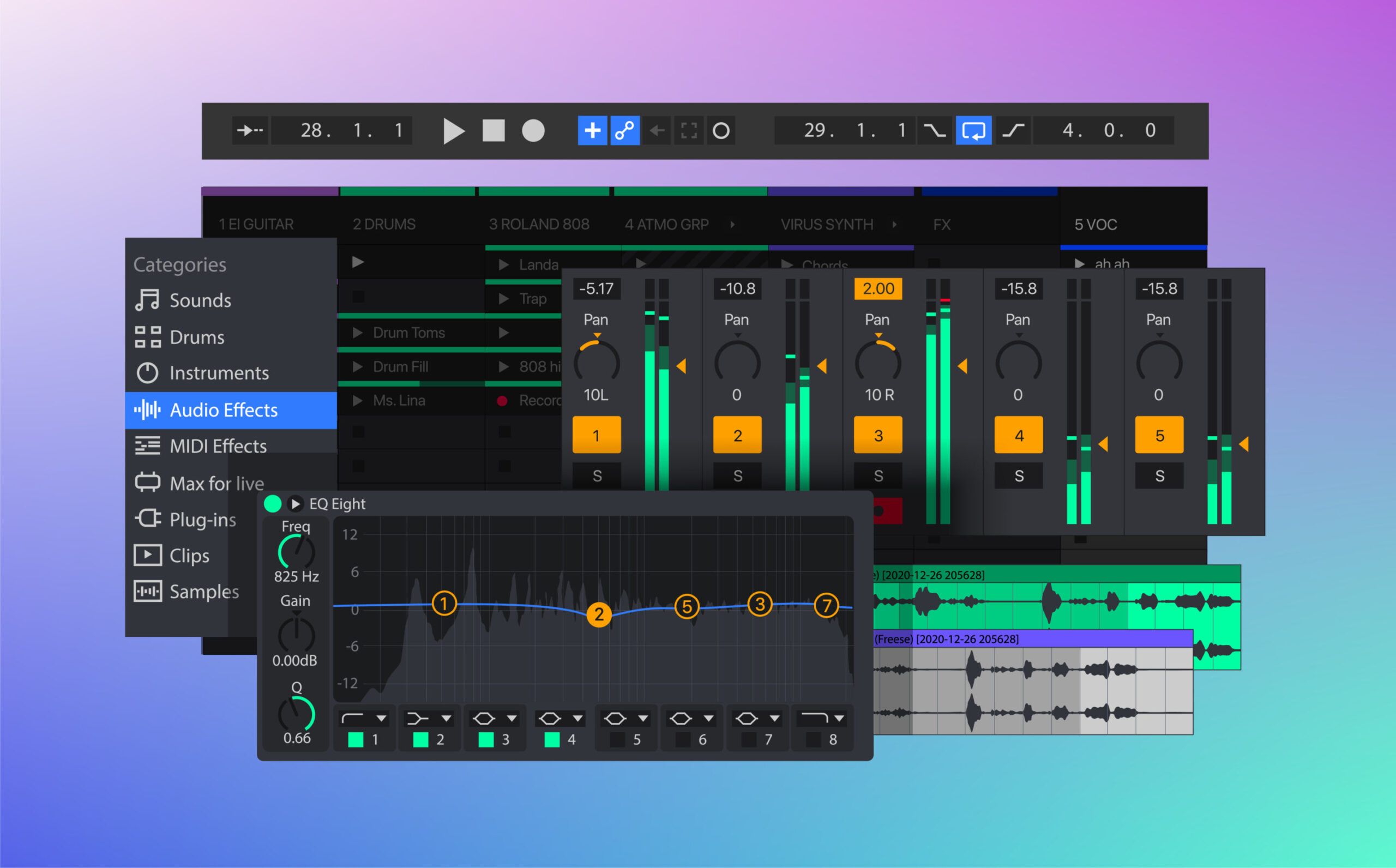Synthesizers have shaped the sound of modern music, evolving from bulky analog machines to sophisticated digital plugins that fit inside your laptop. This blog explores the journey of synth plugins, tracing their roots from analog legends to today’s digital powerhouses, and provides essential resources for producers at every level
Synthesizers have always been at the heart of innovation in music production. From the earliest analog circuits to today’s cutting-edge digital plugins, these tools have empowered artists to explore new sonic territories. The journey from analog to digital is not just about technology—it’s about creativity, accessibility, and the democratization of music making.
“Synth plugins have transformed music production, making powerful sounds accessible to everyone with a computer.”
Analog Era: The Birth of Electronic Sound
The Foundations
The story of synth plugins begins with analog synthesizers. In the 1960s and 70s, pioneers like Robert Moog and Don Buchla introduced the world to modular synths, which used voltage-controlled oscillators, filters, and envelopes to shape sound. These machines were large, expensive, and often temperamental—but their warm, organic tones became the backbone of electronic music.
Key Analog Synths
- Moog Modular
- ARP 2600
- Roland Jupiter-8
- Sequential Circuits Prophet-5
Moog Modular Synthesizer Characteristics
- Warm, rich sound
- Physical controls (knobs, sliders, patch cables)
- Unique imperfections (drift, noise, saturation)
The Limitations
Analog synths, while beloved, were limited by their size, cost, and maintenance needs. Musicians dreamed of more portable, versatile solutions.
The Digital Leap: Hardware to Software
Digital Hardware Synths
The 1980s saw the rise of digital synthesizers like the Yamaha DX7, which used FM synthesis to create new timbres. Digital technology enabled more precise control, patch storage, and new synthesis methods (FM, wavetable, additive).
Key Digital Synths
- Yamaha DX7
- Roland D-50
- Korg M1
Yamaha DX7 – Dawn of Software Synthesis
The 1990s and early 2000s brought powerful computers and the birth of software synths. Early plugins emulated analog gear, but soon developers pushed beyond hardware limitations, introducing new synthesis techniques and user interfaces.
The Rise of VST, AU, and AAX Plugins
Plugin Formats Explained
- VST (Virtual Studio Technology): Developed by Steinberg, VST became the most popular plugin format, compatible with most DAWs on Windows and macOS.
- AU (Audio Units): Apple’s proprietary format for Logic Pro and GarageBand.
- AAX (Avid Audio eXtension): Used in Pro Tools.
| Format | Platform | DAW Compatibility |
|---|---|---|
| VST | Win/Mac | Most DAWs |
| AU | Mac | Logic, GarageBand |
| AAX | Win/Mac | Pro Tools |
Why Plugins Changed Everything
- Portability: Use anywhere, anytime
- Affordability: Many free or low-cost options
- Flexibility: Unlimited instances, automation, recall
Iconic Synth Plugins That Changed the Game
Native Instruments Massive :
Massive introduced a new era of digital sound design, with its powerful wavetable engine and intuitive interface. It became a staple for bass music and EDM producers.
Xfer Serum :
Serum is renowned for its high-quality sound, visual feedback, and deep wavetable editing. It’s a favorite among modern producers for its versatility and ease of use.
Arturia V Collection :
Arturia’s V Collection emulates classic analog synths in plugin form, bringing the sounds of the Minimoog, Prophet-5, and more to your DAW.
u-he Diva :
Diva models classic analog circuits with uncanny accuracy, offering lush, analog-style sounds in a digital package.
Valhalla SuperMassive :
A free plugin known for its lush, expansive reverbs and delays, SuperMassive is a go-to for ambient and cinematic producers2.
Free Synth Plugins for Aspiring Producers
For those starting out, free synth plugins offer powerful tools without the price tag. Here are some top picks:
- Vital: A free wavetable synth with a modern interface and deep modulation.
- Surge XT: Open-source, feature-rich, and highly versatile.
- Tyrell N6: Analog-style sounds from u-he, free to download.
- Dexed: A faithful Yamaha DX7 emulation.
“Free synth plugins have lowered the barrier to entry, allowing anyone to start producing professional sounds.”
Sound Design: The Art of Sculpting Audio
Synth plugins are more than instruments—they’re creative playgrounds. Modern plugins offer:
- Drag-and-drop modulation
- Visual feedback (oscilloscopes, spectrum analyzers)
- Randomization and macro controls
- Preset morphing
MIDI Integration
With MIDI, producers can automate every parameter, sequence complex patterns, and integrate hardware controllers for tactile control2.
The Future of Synth Plugins
The evolution of synth plugins continues at a rapid pace:
- AI-Assisted Sound Design: Plugins like Output’s Arcade use AI to suggest sounds and effects.
- Cloud-Based Collaboration: Plugins that sync presets and patches across devices.
- Immersive Audio: Tools for spatial and 3D sound design.
What’s Next?
Expect more hybrid plugins that blend analog modeling with digital innovation, deeper integration with DAWs, and even more accessible tools for beginners.
Essential YouTube Resources
Conclusion: The Infinite Playground
Synth plugins have come a long way—from the analog giants of the past to today’s digital masterpieces. Whether you’re a seasoned producer or just starting out, the world of synth plugins offers endless possibilities for creativity. With free and paid options, innovative features, and a vibrant community, there’s never been a better time to explore the art of synthesis.
“From analog warmth to digital precision, synth plugins are the ultimate playground for sonic exploration.”



